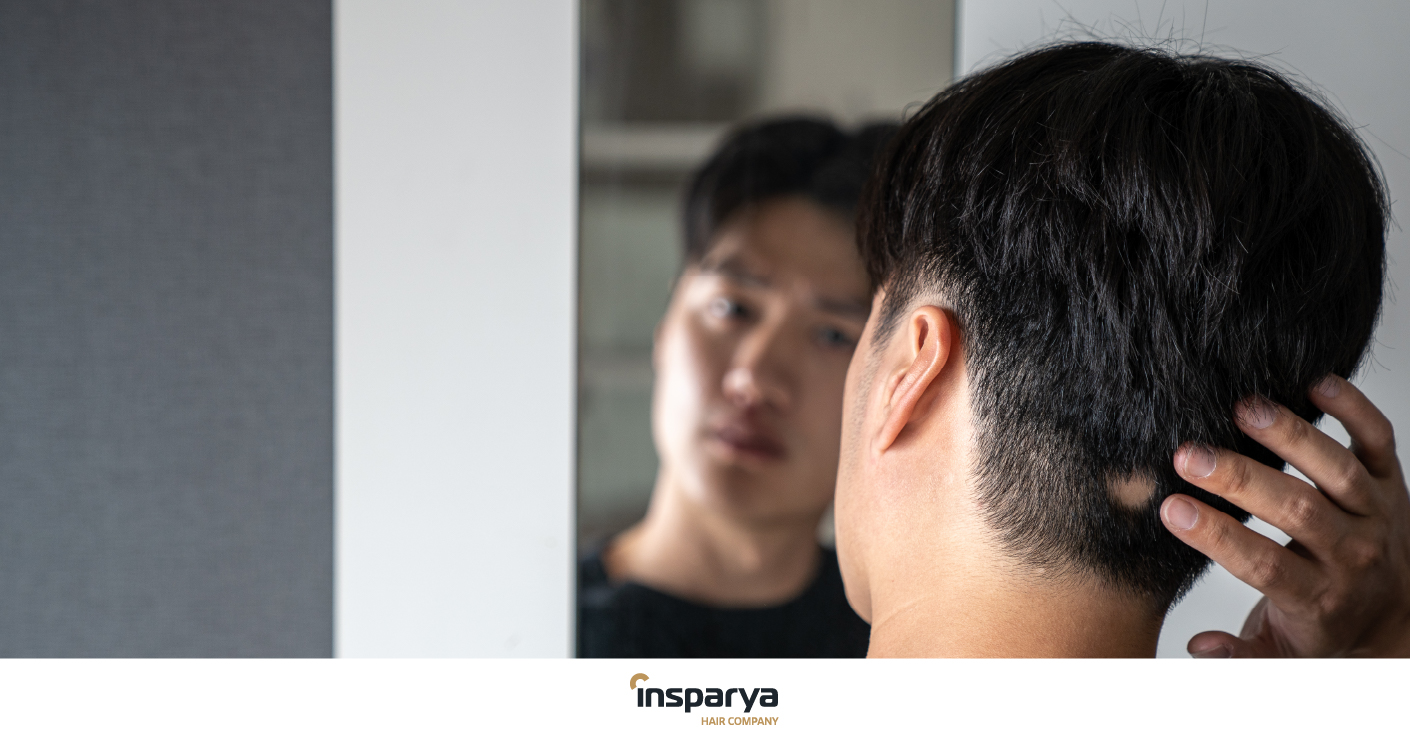
How to treat traumatic alopecia?
The causes of alopecia are varied. These include trauma, which can cause deterioration of the hair follicles and, therefore, hair loss in the affected areas. If this is your situation, don’t worry, most cases have a solution, and Insparya will help you find it.
What is traumatic alopecia?
It’s a type of alopecia that has no genetic or hormonal origin: it’s caused by physical actions on the hair that damage the follicles, which prevents the hair from growing back. Traction is the most common cause, but continued pressure on the hair can also lead to hair loss. However, pulling or pressing on the hair does not only cause it to fall out; if the action is repeated on a regular basis, the damage can be irreversible.
Correctly identifying behaviours that damage our hair health is key to avoiding them and starting treatment for traumatic alopecia as soon as possible. But keep in mind that if these habits are resumed after hair recovery, the hair will fall out again.

What are the causes of traumatic alopecia?
This type of alopecia, which is more common in women than in men, causes hypersensitivity, for example after wearing their hair up for several hours. In addition, itching of the scalp and even a slight headache may be noticed. Depending on the cause, these are the most common traumatic forms of alopecia:
- Traumatic traction alopecia involves hair loss at the temples and also at the front of the head. The reason is excessive tension that breaks the follicle, generated by hairstyles such as buns, braids, dreadlocks or very tight pigtails, as well as aggressive hairstyles accompanied by the use of hair straighteners, dyeing, etc.
- Traumatic pressure alopecia generates similar damage, but through continuous rubbing or pressure. Helmets, caps, headbands or hats that are too tight compromise the oxygenation of the follicles, which leads to hair weakening and subsequent hair loss.
- In the case of traumatic alopecia due to trichotillomania, the reason for hair loss is the nervous and repetitive habit of pulling out the hair. This leads to the appearance of localised, non-scarring bald patches, though it may result in scarring if the habit is repetitive. The good news is that this is an easily reversible situation once the habit is eliminated.

Treatments for traumatic alopecia
As we said before, in some cases it is possible to recover hair just by quitting the habits that triggered the hair loss. However, if the follicle has been damaged, a diagnosis by a medical specialist will be necessary, who will indicate the most appropriate treatment.
Among the most common solutions for traumatic alopecia is the application of Minoxidilwhich will help strengthen the hair. In addition, Platelet-Rich Plasma (PRP) combined with hair mesotherapy will nourish and stimulate the follicles in the areas affected by alopecia.
If the damage to the scalp is irreversible, the best option is hair transplantation. This involves the transplantation of follicles from areas not affected by traumatic alopecia, especially the back of the head, to the areas where the hair has fallen out. This allows the hair to grow normally, without compromising the density of the donor area.
At Insparya hair clinic we offer you a team specialised in hair health, as well as the most innovative and effective technology against traumatic alopecia.






